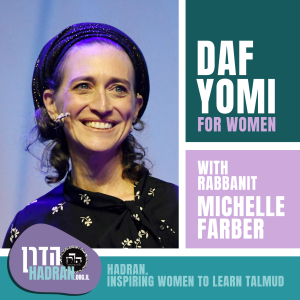
Today's daf is dedicated by Rhona Fink in honor of Avigayil bat Miriam Baruch with blessing for a refuah shleima, refuat hanefesh v'refuat haguf.
on the blood of a sacrifice " (Exodus 34:25) - in one it is written that it is relevant in melika and in one it is written that it is not. In one it is written that whoever burn the innards on the altar is also liable and in one it is written that it is not. How does the Gemara resolve the contradictions? The Gemara brings the source to the words of R. Yehuda and to the words of R. Shimon in the mishnah who disagree as to which sacrifices are included in the prohibition that one can not slaughter while having chametz. The mishnah details how the Passover sacrifice was offered. They would split the people into 3 groups that would enter the Temple one after the other. Each sect enters separately and they would lock the doors, they would blow the trumpets, the owners would slaughter their sacrifice, the priests stand in rows with silver or gold bowls in their hands (a row of those with silver and a row with those with gold) and receive the blood. They would transfer the bowls from one to the other until it reached the last kohen and he would throw it on the altar on the side where there was a base to the altar. As they were slaughtering, they would recite Hallel, sometimes twice or three times. The kohanim would wash the floors even on Shabbat but the rabbis disagreed. Rabbi Yehuda would have them take a cupful of blood from the floor to thrown on the alter but the rabbis disagreed. They hung the animals on hooks to flay them and the mishna describes what they would do on weekdays or Shabbat when there were not enough hooks. The gemara starts to find derivations for the laws in the mishna or delve more in depth.
More Episodes
 2024-03-28
2024-03-28
 2024-03-27
2024-03-27
 2024-03-26
2024-03-26
 2024-03-24
2024-03-24
 2024-03-22
2024-03-22
 2024-03-22
2024-03-22
 2024-03-21
2024-03-21
 2024-03-20
2024-03-20
 2024-03-19
2024-03-19
 2024-03-18
2024-03-18
 2024-03-17
2024-03-17
 2024-03-15
2024-03-15
 2024-03-15
2024-03-15
 2024-03-14
2024-03-14
 2024-03-13
2024-03-13
 2024-03-12
2024-03-12
 2024-03-08
2024-03-08
Create your
podcast in
minutes
- Full-featured podcast site
- Unlimited storage and bandwidth
- Comprehensive podcast stats
- Distribute to Apple Podcasts, Spotify, and more
- Make money with your podcast
It is Free
- Privacy Policy
- Cookie Policy
- Terms of Use
- Consent Preferences
- Copyright © 2015-2024 Podbean.com





